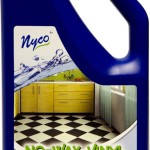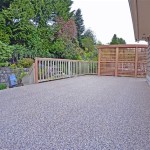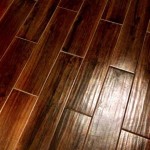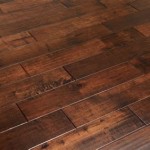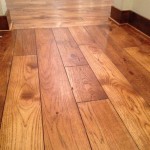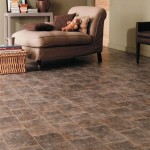SPC vinyl flooring is a popular flooring choice for many homeowners. It is a durable, waterproof, and easy to install material that is appealing in a wide range of colors and styles. SPC stands for Stone Plastic Composite. It is a combination of natural stone powder, polyvinyl chloride (PVC) and stabilizers, which provide an extremely durable flooring material that is also easy to maintain and clean.
Advantages of SPC Vinyl Flooring
SPC vinyl flooring offers a variety of benefits to homeowners. The main advantages include:
- Durability – SPC vinyl flooring is highly resistant to scratches, scuffs and stains, making it an ideal choice for busy households.
- Waterproof – SPC vinyl flooring is completely waterproof, making it great for bathrooms, kitchens, and other areas where water is present.
- Easy to Install – SPC vinyl flooring is easy to install and can be done by most do-it-yourselfers. It is also lightweight and easy to transport and handle.
- Variety of Colors and Styles – There is a wide variety of SPC vinyl flooring available in a range of colors and styles, so you can find something to fit your home’s décor.
- Cost-Effective – SPC vinyl flooring is a cost-effective flooring option, making it a great choice for budget-conscious homeowners.
Disadvantages of SPC Vinyl Flooring
Like any flooring material, there are some drawbacks to SPC vinyl flooring. These include:
- Not Suitable for Outdoors – SPC vinyl flooring is not designed for outdoor use, so it is not suitable for patios or decks.
- Can Be Prone to Damage – SPC vinyl flooring can be susceptible to damage from excessive heat, so it should not be installed in areas where there is a lot of direct sunlight.
- Limited Customization Options – SPC vinyl flooring is limited in terms of customization options, so you may not be able to find the exact style or color that you’re looking for.
How to Install SPC Vinyl Flooring
Installing SPC vinyl flooring is relatively straightforward and can be done by most do-it-yourselfers. Here are the steps to follow:
- Prepare the Subfloor – Make sure the subfloor is clean, level, and free of any debris. If the subfloor is not level, use a self-leveling compound to level it out.
- Lay the Flooring – Lay the SPC vinyl flooring according to the manufacturer’s instructions. Start in the corner and work your way out, making sure to leave a 1/4-inch gap between the flooring and the walls.
- Secure the Flooring – Use a hammer and nails or a stapler to secure the flooring to the subfloor.
Maintenance Tips for SPC Vinyl Flooring
SPC vinyl flooring is relatively easy to maintain, but there are a few things you can do to ensure it stays looking its best for years to come:
- Regular Cleaning – Sweep and vacuum the floor regularly to remove dust and debris. You can also use a damp mop with a mild detergent to clean the floor.
- Protect from Stains – Apply a sealant to the floor to protect it from spills and stains.
- Avoid Excessive Heat – Do not place items such as irons and hair dryers directly on the floor, as the heat can damage the flooring.
Conclusion
SPC vinyl flooring is a popular flooring choice for many homeowners due to its durability, waterproof nature, and variety of colors and styles. It is easy to install and maintain, making it a great choice for busy households. While there are a few drawbacks to this type of flooring, the advantages far outweigh the disadvantages, making it an ideal choice for those looking for a cost-effective, low-maintenance flooring option.















Related Posts

